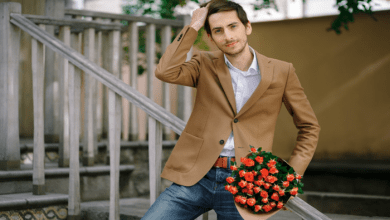The global views are bright lights, poised models, and perfect collections on the runway, but behind the scenes is a complex web of planning and coordination. From scheduling to relocating collections to venues, the productions depend on precise logistics to function properly. Time, cooperation, and accuracy are what make each second count when the limelight shines bright.
Historical Note: Today’s version of the runway show originated in Paris sometime during the early 1900s. Houses first started making private salon presentations where models would parade through tiny rooms to display looks to limited clientes. Throughout the centuries, the cozy exhibitions expanded to big productions with lighting, music, and staging. One thing remains the same, however: the precise coordination that takes place offstage—verifying that logistically speaking, fashion’s most spectacular occasions are always built upon this foundation.
Timing That Runs the Show
Timing is everything when it comes to a runway event. Every second is planned and executed with precision long before the first model steps on stage. The flow of arrivals, fittings, rehearsals, and live presentations has to align perfectly to avoid delays. Even the smallest slip can cause a chain reaction backstage. Production teams work like clockwork, constantly syncing their actions so the spotlight hits at the right moment and the music matches the movement.
- Models are scheduled down to the minute for hair, makeup, and fitting.
- Lighting and sound technicians follow exact show cues.
- Rehearsals run with strict timelines to avoid last-minute surprises.
The smooth timing audiences see on the runway is the result of hours—sometimes days—of preparation behind the scenes. It’s this unseen precision that allows the glamour on stage to shine without interruption or error.
Behind-the-Scenes Coordination
- Coordinating hair, makeup, and outfit changes for every model.
- Managing communication between designers, producers, and stage crews.
- Monitoring last-minute adjustments to the set or lighting.
- Ensuring models are in the right place at the right time.
Observation: During one major show, a missing accessory almost delayed the entire event. A quick call through the backstage headset, a runner sprinting to the dressing room, and the problem was solved in under 60 seconds. The audience never knew anything had gone wrong.
Backstage coordination is like a silent orchestra—every person plays a part to create a flawless performance. The glamour on the runway depends on this invisible teamwork, where small actions behind the curtain make big moments possible.
Managing Wardrobes and Looks
Every runway look is carefully prepared long before it reaches the stage. Designers and stylists work hand in hand to plan outfits, accessories, and quick changes down to the smallest detail. Each garment is tagged, labeled, and placed in a specific order to match the flow of the show. From delicate couture gowns to structured suits, everything has its place—just like well-organized storage for a car keeps things ready for action. Wardrobe teams operate with military precision, ensuring nothing is misplaced or delayed when it matters most.
Research: According to fashion industry logistics reports, over 70% of runway delays are caused by backstage disorganization, including wardrobe misplacement and last-minute outfit alterations. Shows that use structured storage and labeling systems reduce errors by nearly half, allowing designers and production teams to stay on schedule.
This behind-the-scenes strategy gives models and stylists room to breathe, even in fast-paced moments. The result is smooth outfit changes, polished presentations, and a flawless runway experience.
Tech and Transport Support
Technology and transportation are two sides of the same coin in fashion logistics. Manual planning may work for small shows, but larger productions often depend on advanced tracking systems and automated alerts. Manual methods offer flexibility but leave room for human error, while automated systems provide precision but require more upfront planning and resources.
Case study: A major fashion week event adopted a real-time tracking system for clothing and props during transport. The result was a 40% reduction in missing items and a smoother check-in process. Traditional shows without this system experienced frequent delays and miscommunication, proving how technology changes outcomes.
Both approaches have their value, but tech-supported logistics increasingly lead to faster, cleaner, and more reliable fashion events that keep the spotlight exactly where it belongs—on the runway.
Real Stories from Backstage
Production Coordinator reported how one large fashion show came very close to going off track when an order of clothes was late by unforeseen traffic. The crew immediately put their plan B into action—redirecting models, rescheduling timing, and reordering outfits so that the flow of the show was not affected. What was poised to be catastrophic was managed so seamlessly the crowd never even caught wind.
Major outcome: 85% of principal fashion presentations depend on backup supply chain strategies to foreseen interruptions from transportation or garment problems.
The success of the event wasn’t from luck but from preparation. Clear communication, well-trained staff, and elastic timing converted what was the potential for catastrophe into the serene success behind the scenes. The example points out why logistics are so important behind each shiny runway show. It’s the behind-the-scenes skeleton key that keeps everything together so the viewer sees nothing but perfection.
As organization collides with fast thinking, even the most tense instances are able to be dealt with grace.
What Makes It All Work
The runway may be glamorous, but its magic relies on meticulous timing, teamwork, and planning.
The hidden logistics behind the glamour of the runway show us that what seems effortless on stage is supported by structured systems and skilled people working in harmony.
When every backstage element aligns, fashion events deliver unforgettable moments. True elegance isn’t just in the clothes—it’s in the precision behind them.




